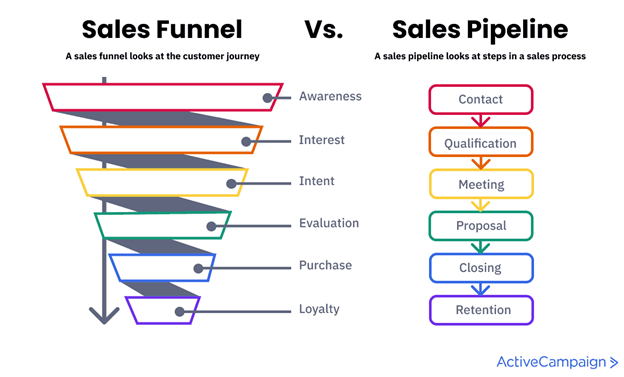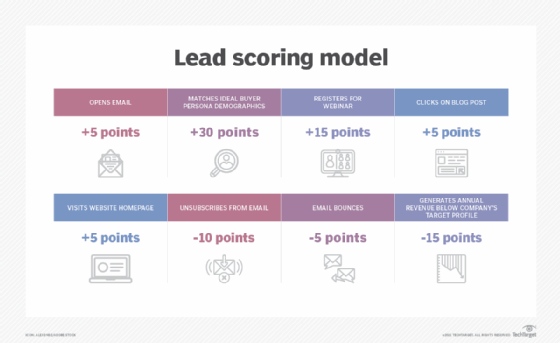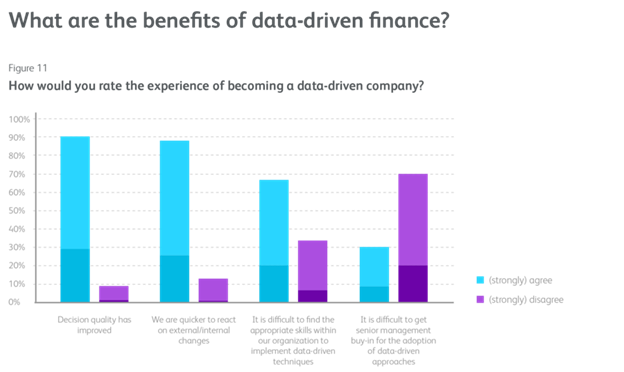Your Guide to Sales Pipeline Management During a Downturn
When tough economic times are on the horizon, sales pipeline management is more important than ever. Not only is your sales pipeline a key resource for understanding your existing sales revenue potential, it’s a critical indicator of your company’s financial health throughout a downturn. It’s also a way to understand how well you’re attracting new business even amidst uncertainty.
So: How do you establish a pipeline right now that can do all of the above when adversity hits? Once the market does take a downturn, how do you manage your pipeline effectively to maximize revenue?
Read on for the answers to these questions and more.
Quick Takeaways:
- Your sales pipeline is defined by steps in the sales process. It helps you track individual prospects and understand prospect volume by stage.
- It’s essential to establish a solid sales pipeline now so it can serve as a resource when adverse economic conditions arrive.
- Establishing a strong sales pipeline requires knowing and targeting your ideal audiences, using data-driven approaches, leveraging a CRM tool, and training your sales team well.
- During a downturn, sales pipeline management should be heavily focused on existing prospect and customer relationships.
- Effective digital marketing—like timely thought leadership content—can keep your pipeline growing even during challenging economic times.
- Data-driven sales organizations react more quickly and effectively to change.
Why Your Sales Pipeline Matters When a Downturn Hits
Your sales pipeline is a significant indicator of your business’s overall health at any time. It shows how many qualified leads you currently have and where they are in the sales cycle, helping you to understand your total sales opportunity size in the near future.
Unlike your sales funnel, which identifies stages of the customer journey, your sales pipeline defines exactly which step your prospect is at in the sales process—and which are still left before conversion.

During an economic downturn, this information is critical. When markets are uncertain, consumers often become more cautious in their spending, scrutinizing purchases more closely and sometimes delaying them completely. This can lead to a slower sales cycle and increased difficulty in closing deals, which will in turn impact your revenue potential.
It’s also more difficult to convert new leads at the top of your pipeline since most businesses focus less on new purchases and more on maintaining business health until economic conditions improve.
As you navigate these challenges, your sales pipeline becomes a barometer for your business’s ability to weather the storm. A robust sales pipeline—one that’s well-stocked with a mix of potential and ongoing deals—serves as a buffer against the immediate impacts of an economic downturn.
On the flip side, a sparse pipeline means your business could be in a riskier financial position if markets don’t turn around quickly.
Setting Up a Strong Sales Pipeline Right Now
Establishing a solid sales pipeline right now positions your business to be protected when an economic downturn does occur. Not only will you have an established group of high-potential prospects to nurture while markets are uncertain, you’ll have the right systems and processes in place to keep your business operating, even when you have to refocus on more immediate priorities.
When your sales pipeline is healthy and full, you have a safeguard that allows you to spend time on cost optimization, strategic planning, and resource allocation—all of which will make your organization better able to withstand tough market conditions.
Here’s how to take action now to either establish your sales pipeline or optimize the one you have:
- Identify target audiences: Know your ideal customers and target them accurately
- Refine value proposition: Ensure you have a strong, relevant value proposition that highlights how you alleviate pain points and deliver benefits
- Establish data-driven processes: Use data to make smart decisions about sales targeting and other strategies
- Leverage a CRM: Implement a CRM system with features that enable sales automation and provide centralized data dashboards for sales pipeline tracking
- Qualify and score leads: Identify your highest-potential prospects with objective, quantitative lead-scoring
- Train your sales team: Keep your sales team up to date on tools, technologies, and best practices driving sales success
- Create loyalty programs: Encourage repeat business and high retention with loyalty programs that offer exclusive benefits and incentives
- Establish a referral program: Put a referral program in place to drive word-of-mouth referrals from satisfied customers (You can offer incentives for referrals, too)
Last but certainly not least, cultivate a culture of continuous improvement. Don’t wait for an economic downturn to spur you into action—regularly review your sales processes and pipeline metrics to identify areas for optimization.
This proactive approach ensures your pipeline is not just strong now, but also adaptable to future market changes.
9 Strategies for Sales Pipeline Management During a Downturn
When a downturn or recession hits, there are certain sales pipeline management strategies you can put into place that optimize opportunities you already have and keep your pipeline growing despite external uncertainty. These include:
Prioritize High-Quality Leads
A strong, data-driven sales pipeline will tell you which leads are likely to convert and which ones are still far from final purchase. When a downturn hits, identify your highest potential leads and engage them to ensure revenue streams stay reliable as you adjust to new conditions.
As mentioned before, a lead scoring model (like the one shown below) will help you easily sort out high quality leads from mediocre or poor ones.

Enhance Customer Engagement
In a downturn, customer engagement is key. It’s critical to build trust with your existing customers to ensure they stay loyal and your retention remains high. Communicate frequently and transparently with your existing customers, and personalize outreach when you can.
Look for new and evolving business needs they may develop as the market changes, and address them accordingly. Offer incentives to ensure renewals and repeat purchases stay on track.
Offer Flexible Solutions
Adapt your product and service offerings to meet the changing needs of your customers when it’s possible. Consider flexible pricing models, bundled services, or new and tailored solutions that provide more value in challenging times.
Strengthen Relationships
Use this time to build deeper relationships with your current prospects and customers. It’s a good time to make individual outreach efforts and provide extra support to position your business as a trusted advisor.
Leverage Digital Marketing
Even when times are tough economically, digital marketing and SEO-driven content remain cost-effective and affordable. Publish and share timely thought leadership content to keep your brand visible to leads in your current sales pipeline and help attract new customers to keep it growing.
Optimize Sales Processes
An economic downturn often requires a review of your budget and spending. It’s the perfect opportunity to streamline your sales processes to be more efficient. Automate routine tasks, improve lead generation and management practices, and ensure your sales team spends more time selling than working on other administrative tasks.
Utilize Data Analytics
When conditions are changing fast, data is the best way to understand your sales pipeline in real time. It provides objective insights that can help your company’s leadership team make informed decisions based on data.
Analyze sales trends, customer feedback, and market data on an ongoing basis to adjust your strategies, make smarter sales forecasts, and stay ahead of changing market dynamics.
From a financial perspective—especially important during an economic downturn—the benefits of being data-focused are undeniable. CFOs report it has improved their decision quality and enabled them to act more quickly in response to internal and external changes.

Explore New Markets
Diversifying your market base can offset risks associated with a downturn. Explore new markets, verticals, and potential audiences that might be less affected by the recession and can help keep your pipeline full.
Be Agile and Adaptive
Stay agile and be ready to pivot your strategies as the market evolves. Regularly assess the economic landscape and be prepared to make quick adjustments to your sales pipeline management strategy. It is crucial to stay proactive in any circumstance—never reactive to adversity—to be viewed as a trusted provider by your customers and other key stakeholder groups, like employees, partners, and investors.
Putting It All Together
Managing your sales pipeline effectively during a downturn requires a combination of strategic foresight, agility, and a focus on building lasting customer relationships. By adopting the strategies we covered in this article, your business can not only survive a challenging economic climate but emerge stronger and more resilient.
Televerde can help you establish the marketing, sales, and customer experience foundations you need to execute solid sales pipeline management strategies when uncertainty does occur. Our solutions are built to help companies leverage automation and cutting-edge technology to streamline internal processes and stay focused on strategies priorities.
At the same time, we deliver human-led guidance and resources that drive better customer relationships and strong prospect connections. Talk to our team to learn more about how we can help you grow.


